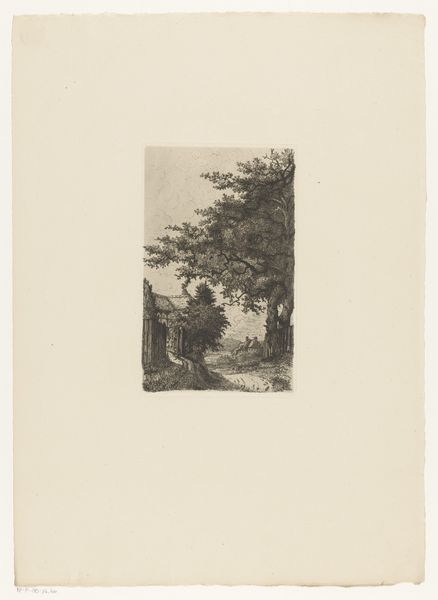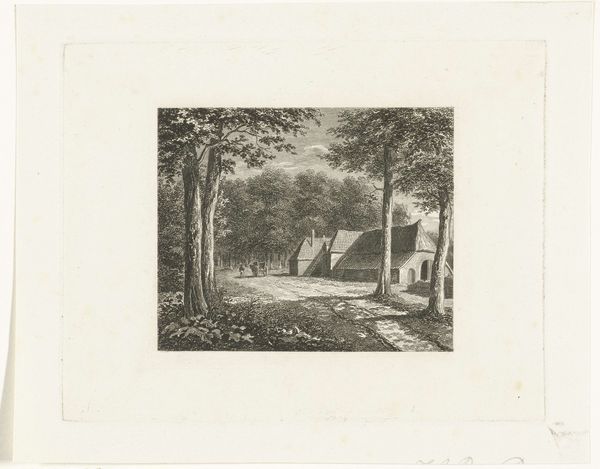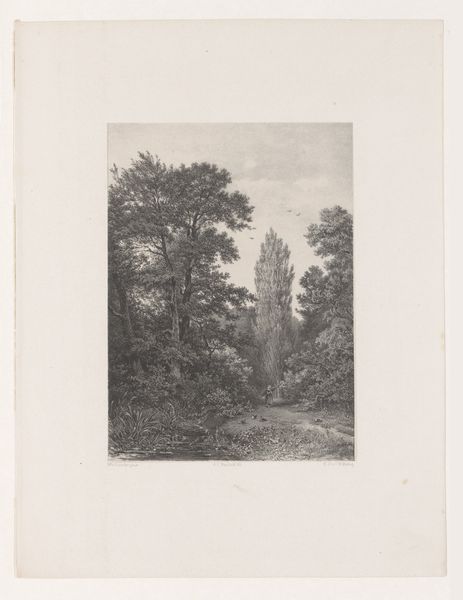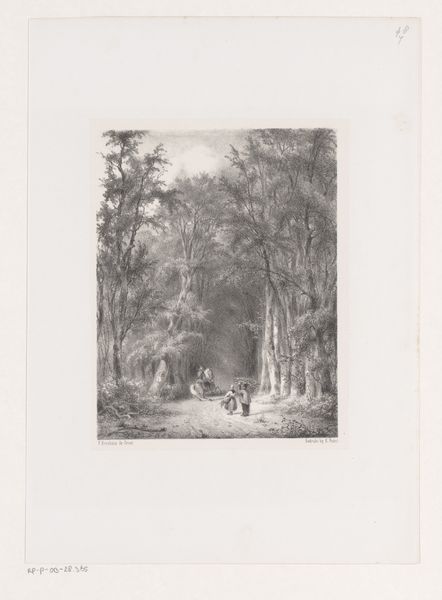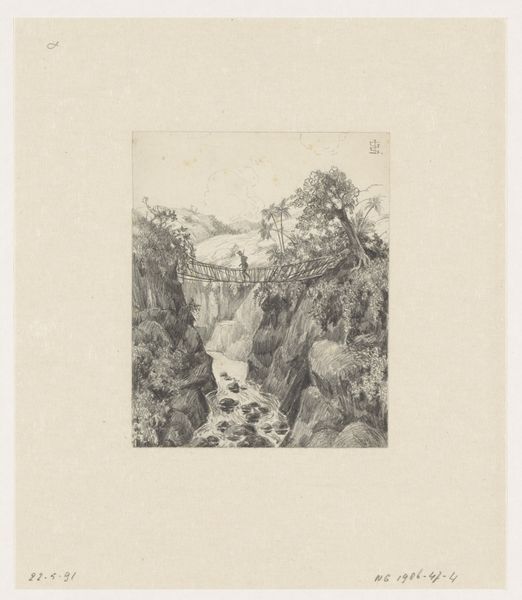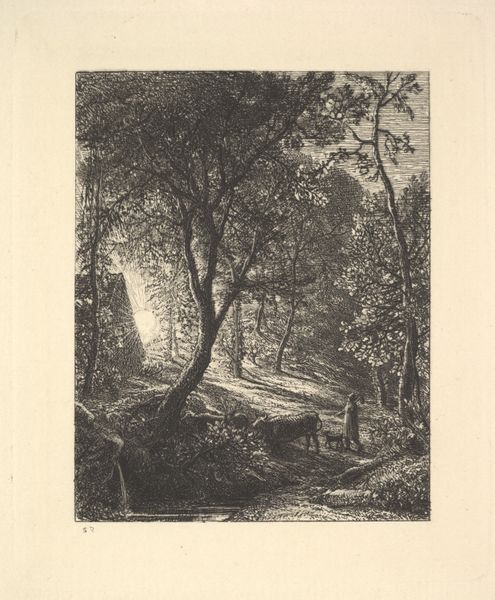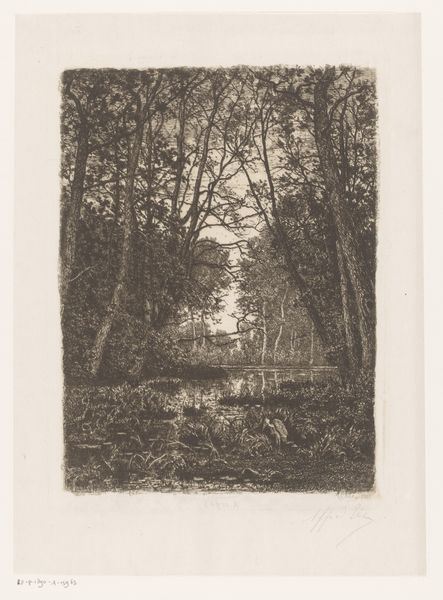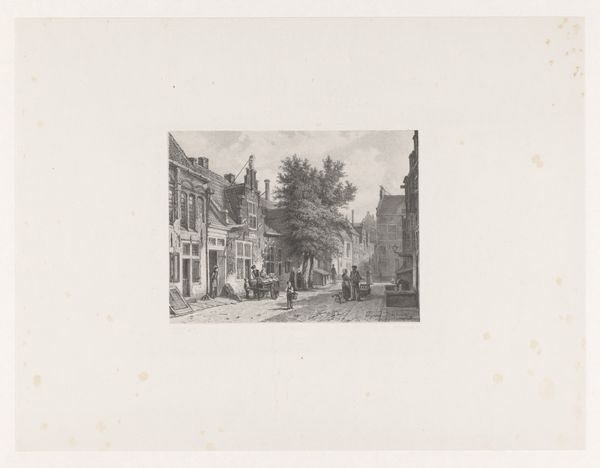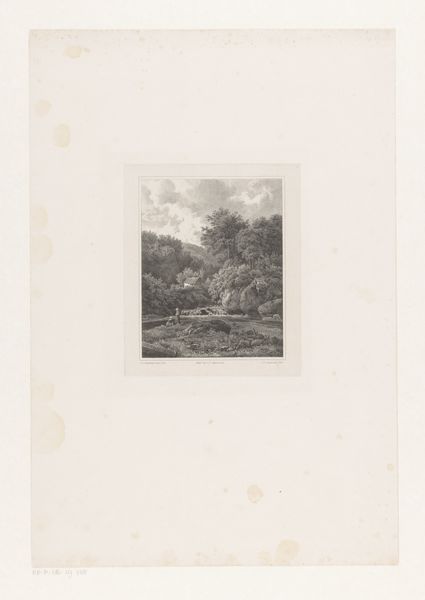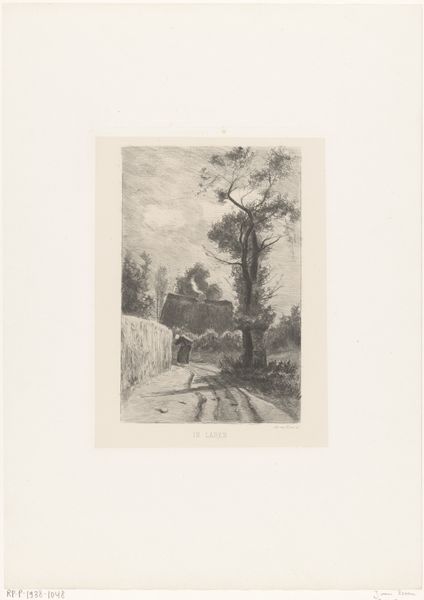
print, engraving
#
dutch-golden-age
# print
#
landscape
#
cityscape
#
genre-painting
#
engraving
#
realism
Dimensions: height 353 mm, width 270 mm
Copyright: Rijks Museum: Open Domain
Adolf Carel Nunnink created this artwork, "Dorpsstraat bij de kerk", using etching techniques. Notice how the composition is structured around a receding street, leading the eye towards the church. The use of light and shadow creates depth, with the foreground cast in shadow and the church bathed in light, drawing our attention to it. The lines of the buildings and street converge, reinforcing this sense of perspective. Nunnink uses a semiotic system of architectural and natural signs to convey ideas about community and spirituality. The church, as a symbol of religious and social order, is juxtaposed with the everyday activities of the villagers. This contrast invites us to consider the relationship between the sacred and the secular in 19th-century Dutch society. The meticulous detail in the etching, from the leaves of the trees to the bricks of the buildings, emphasizes materiality and texture. This formal quality not only enhances the aesthetic appeal but also contributes to the artwork's broader cultural and philosophical discourse about the role of tradition and faith in a changing world.
Comments
No comments
Be the first to comment and join the conversation on the ultimate creative platform.
